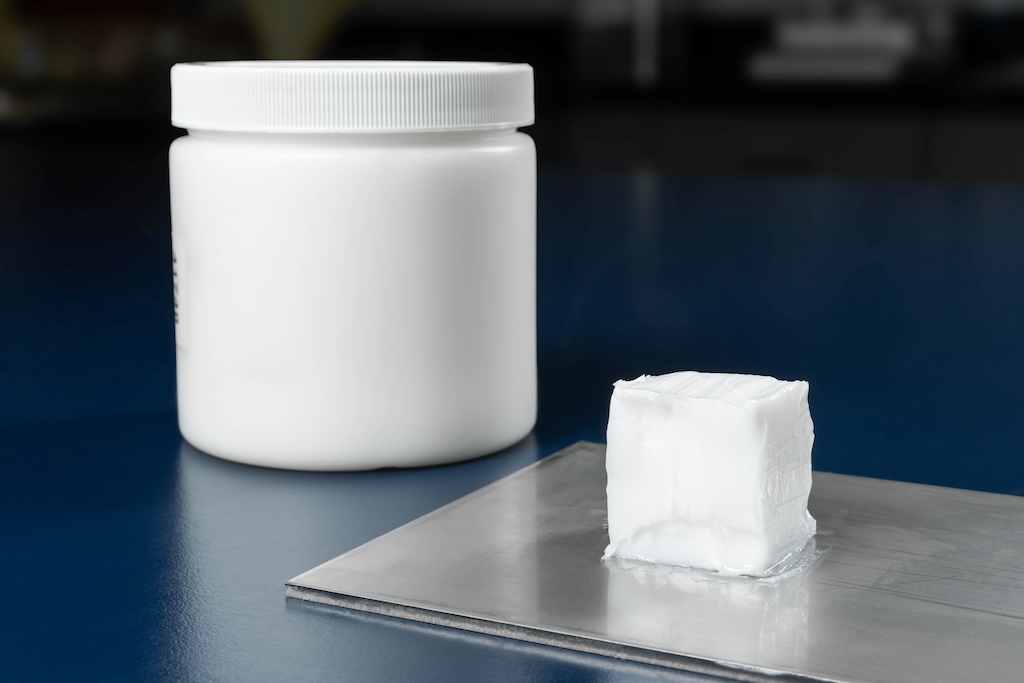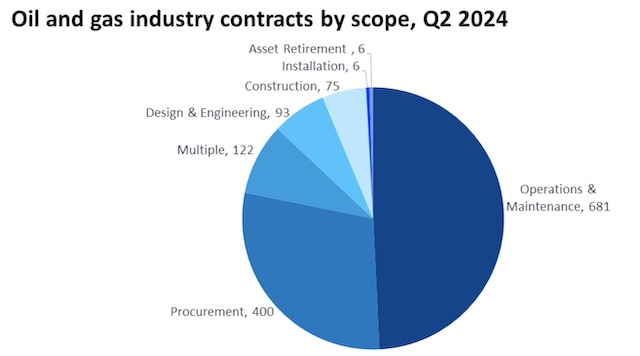Mass and density calibration can now be done in the field, which is important because of increased demand and shortage of staff and systems.
A revival in U.S. oil and gas production is driving increasing numbers of allocation and custody-transfer meter installations. These installations, in turn, mean an increased need for "proving" or calibrating flow-measurement points used for transactional purposes. Meeting these calibration requirements in oil and gas fields (Figure 1) is particularly difficult because shale plays are often in isolated, remote locations, far from proper maintenance facilities.
Estimates say more than 5,000 wells will be drilled in the Permian Basin over the next 20 years. Each well will have one or more flowmeters that need to be calibrated and proven.
Flowmeter proving must be conducted on a regular basis based on regulations and legal contracts. The point is to validate accurate internal product transfer. Meeting Environmental Protection Agency (EPA) regulatory requirements for reclaimed water used in fracking also entails frequent flowmeter testing.
This increased demand, coupled with a shortage of staff and systems, has created a "calibration crisis" in many shale fields. The solution to this problem lies with better calibration methods.
Rather than removing flowmeters for shipment to calibration labs, recent developments—now being deployed in the Permian Basin—bring flowmeter calibration to the shale fields.
Calibration requirements
Shale field flowmeters are calibrated, typically based on the contract between the operator and its customers, about every three months. The Bureau of Land Management (BLM) recently released regulations specifying calibration frequency based on production-well characteristics. BLM specifies calibration frequency, and monthly or quarterly proving intervals are typical. Custody-transfer allocation locations are the most critical, while loading rack or regulated meters are often calibrated annually, sometimes quarterly.
Flowmeters are proven to identify any significant shift in meter factors that result in greater measurement uncertainty. When a shift occurs, a root-cause analysis usually is conducted. Changes can be due to paraffin buildup, mechanical damage to the fiscal meter, or upset operating conditions, such as gas carry-under in liquid lines.
Typically, calibrations are done on a regular, scheduled basis, unless there is a dispute or reconciliation problem. Unless flowmeter removal requires shutting down a well site or facility, meters are proven during operations.
When a flowmeter has to be sent to a calibration lab, the meter is removed, cleaned, packed up, shipped off to the lab, returned, and re-installed. This process can take a week or more for each flowmeter, at a cost of about $500 per meter just for calibration-with additional costs for shipping, time, and labor. In some cases, the wellsite or facility is shut down pending return of the calibrated meter.
More often, critical meters are calibrated or proven "in-situ" without being removed from service. Most installations have proving taps to facilitate this process by allowing quick connection to a field prover, while others do not and require removal of the meter from the process.
Doing it in the field
Field proving and calibration typically are done through third-party service providers that travel to well sites to do the work. Large end users may have a prover integrated into their metering systems. Alternatively, field references such as ball provers (Figure 2), small volume provers, and master meters can be used.
Field provers compare a known volume against the meter output. The ratio between the prover reference volume and the meter reading is the meter factor, used to correct the meter reading. Provers can be uni-directional or bi-directional and use a sphere (ball provers) or a piston (piston provers). A flowmeter also can be put in series with a master meter, with their readings compared. (See Figure 3.)
Field references used for proving typically have a higher level of uncertainty when compared to stationary calibration facilities or provers, are prone to site constraints, and don’t work well in less than ideal operating conditions. Conventional ball provers and compact provers have many mechanical components—such as a four-way valve, piston seals, motors, pumps, etc.—that must be maintained and are subject to mechanical wear.
Master meter proving normally has the highest total uncertainty of all meter proving methods. The technique used to prove the master meter and the process to prove the line meter introduce various levels of uncertainty into the petroleum measurement hierarchy. Some of the factors that can contribute to a higher uncertainty include the following:
- Installation conditions where the master meter is not proven in-situ
- Differences between the viscosity and density of the liquid used to prove the master meter and the liquid used during proving
- Differences between the temperature, pressure, flow conditions, and flow rates used to prove the master meter and those present during line meter proving
- The reproducibility of the interval between proving, severity of service, meter damage, transportation and storage, use, corrosion, and other functions
- Flow rate changes during proving of the master meter that result in poor repeatability or bias errors due to delay in response time of the master meter pulse output. Larger prover volumes may reduce the effect because it increases the proving time.
Instead of relying on ball provers, piston provers, or master meters, recent developments make it possible to bring a "calibration lab" to the shale field. For example, Endress+Hauser is working with a third party to deploy their HP80 (U.S. patent pending 15/605, 562) Field Reference Meter Standard (Figure 4) for mass, density, and volume determination under existing operating conditions. This solution also is being adopted for calibration of tanks and level instruments.
Field reference meter standards
This type of field reference meter standard system provides field metrologists and calibration specialists with the metrics, tools, and information needed to measure and manage all primary measurements in the upstream, midstream, and downstream segments of the oil and gas market, including shale fields.
In addition to measuring the accuracy of the mass flow, operating density, volume flow, linearity, and repeatability of an equipment under test (EUT), a field reference meter standard also can capture and report field conditions including information on the process temperature, pressure, Reynolds number, and viscosity.
These systems provide in-situ verification and calibration of all types of flowmeters including ultrasonic, positive displacement, turbine, and Coriolis flowmeters.
For example, the HP80 system can calibrate 1.5- to 4-in. nominal size flowmeters over a range of 35 to >750 gallons/minute. The system uses three 2-in. Endress+Hauser Promass Q Coriolis flowmeters as field reference standards. The system has control valves, allowing the user to configure one, two, or three meters for the test set up (Figure 5).
To conduct a flow verification, the team positions the field reference meter standard system as close as possible to the piping containing the EUTs. A field technician connects hoses using swivel joints to the EUT’s prover taps, opens the control valves, and adjusts the flow to accommodate calibration of the EUT.
Hydrocarbons flow through the EUT, and then through the Coriolis field reference meter(s). A flow computer accumulates the totals from the reference meters in the system and compares the EUT output to that of the reference standard. A meter factor and repeatability calculation are applied to complete a successful prove. The new meter factor is compared to the previous meter factor to assess any trends. A successful prove is dependent on obtaining three to five consecutive meter factors within 0.05%.
The calibration records are managed using a flow computer, with process data recorded and managed via the Endress+Hauser RSG45 Advanced Data Manager, or similar software. The system is self-contained including a 24 Vdc power supply for all field and reference devices. Solar panels are used to maintain a charge within the battery assembly. Calibration profiles and results are captured and reported and can be archived locally on secured media, communicated to a local network for storage, or sent to cloud storage as part of an Industrie 4.0 solution.
A typical calibration takes 30-45 minutes per meter including connection, test report generation and disconnection time. Field trials have shown these types of field reference meter standard systems can calibrate two to four times faster than conventional ball provers or piston provers, with much greater accuracy on a mass basis. Full-stream density measurement is used to ensure product quality and to facilitate volumetric calibration using operating conditions or API tables.
Summary information
Expansion of shale oil and gas fields in the U.S. have increased the need for regular calibration of flowmeters and level devices. Conventional calibration methods are expensive, time-consuming, and with high levels of uncertainty. Recent developments now bring laboratory quality calibrations to the shale fields with field reference meter standards systems deployed through third party service providers.
Brian Hoover is the business development manager for Strategic Alliances at Endress+Hauser, where he is active in developing solutions for managing gas, oil and water. He has been with Endress+Hauser since 1995 and has more than 30 years of experience with Coriolis flowmeters.



